|
Books Should Be Free Loyal Books Free Public Domain Audiobooks & eBook Downloads |
|
|
Books Should Be Free Loyal Books Free Public Domain Audiobooks & eBook Downloads |
|
Mystery Novels |
|---|
Book type:
Sort by:
View by:
|
By: Mark Twain | |
|---|---|
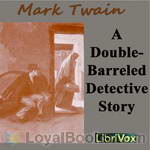 A Double Barreled Detective Story
A Double Barreled Detective Story
A Double Barrelled Detective Story is a novel by Mark Twain (Samuel Clemens), in which Sherlock Holmes finds himself in the American west.At a mining camp in California, Fetlock Jones, a nephew of Sherlock Holmes, kills his master, a silver-miner, by blowing up his cabin. Since this occurs when Holmes happens to be visiting, he brings his skills to bear upon the case and arrives at logically worked conclusions that are proved to be abysmally wrong by an amateur detective with an extremely keen sense of smell, which he employs in solving the case. This could be seen as yet another piece where Twain tries to prove that life does not quite follow logic. | |
By: Charles Dickens | |
|---|---|
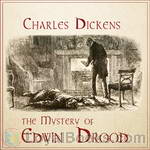 The Mystery of Edwin Drood
The Mystery of Edwin Drood
The Mystery of Edwin Drood is the final novel by Charles Dickens. It is a mystery indeed; the serial novel was just half completed at the time of Dickens’ death – leading to much speculation how it might have ended.The novel is named after Edwin Drood, one of the characters, but it mostly tells the story of his uncle, a choirmaster named John Jasper, who is in love with his pupil, Rosa Bud. Miss Bud is Drood’s fiancée, and has also caught the eye of the high-spirited and hot-tempered Neville Landless! Landless comes from Ceylon with his twin sister, Helena... | |
 A House to Let
A House to Let
A House to Let is a novella originally published in 1858 in the Christmas edition of Dickens’ Household Words magazine. Each of the contributors wrote a chapter (stories within a story, and in the case of Adelaide Anne Procter, as a story in verse) and the whole was edited by Dickens. The plot concerns an elderly woman, Sophonisba, who notices signs of life in a supposedly empty dilapidated house (the eponymous “House to Let”) opposite her own, and employs the efforts of an elderly admirer, Jabez Jarber, and her servant, Trottle, to discover what is happening within. | |
 Hunted Down: the detective stories of Charles Dickens
Hunted Down: the detective stories of Charles Dickens
| |
By: Sir Arthur Conan Doyle (1859-1930) | |
|---|---|
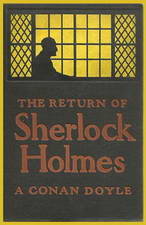 The Return of Sherlock Holmes
The Return of Sherlock Holmes
A young gambler is found shot dead in a closed room. Dr. Watson, who still mourns the disappearance of his famous friend is intrigued enough to step out of his house and take a look at the crime scene. A crowd has gathered there, curiously gazing up at the room where the crime is supposed to have taken place. Watson inadvertently jostles against an elderly, deformed man and knocks a stack of books from the fellow's hand. The man curses Watson vilely and disappears into the throng. It suddenly occurs to Watson that one of the books that he had helped the stranger pick up had seemed familiar... | |
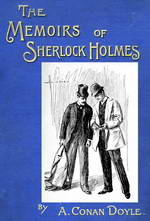 The Memoirs of Sherlock Holmes
The Memoirs of Sherlock Holmes
For more than a century and a quarter, fans of detective fiction have enjoyed the doings of the iconic sleuth, Mr. Sherlock Holmes. In the company of his faithful companion, Dr Watson, Holmes has consistently delighted generations of readers. Created by a Scottish writer and physician, Sir Arthur Conan Doyle, this immortal private eye has solved cases for kings and commoners, lovely damsels and little old ladies, engineers and country squires and a legion of others who come to him in distress and perplexity... | |
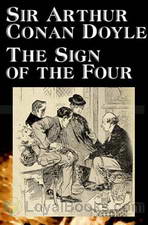 The Sign of the Four
The Sign of the Four
A secret shared by four convicts and two prison guards, a daughter in search of her missing father, a strange gift of a single pearl received every year, a fabulous treasure buried in the ancient Agra Fort in India, an eccentric detective being consulted to solve a deadly puzzle. All these events are set against the turbulent backdrop of the Great Indian Mutiny of 1857 in the second Sherlock Holmes novel by Sir Arthur Conan Doyle, The Sign of the Four. Mary Morstan, a lovely young woman, comes to the Baker Street lodgings shared by Holmes and Dr Watson... | |
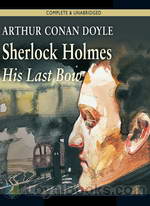 His Last Bow
His Last Bow
The disappearance of a German spy and the gathering storm that foretells the prelude to World War I is what greets you in this riveting book. The further you read the more mysteries unfold like secret submarine plans with some pages missing found in the hands of a corpse. There's also family insanity in Cornwall, a dead Spaniard and mafia hiding in an empty London flat. His Last Bow was published in the Strand Magazine circa 1908 and included several other short stories as well. Even during Sir Arthur Conan Doyle's own lifetime, Holmes had acquired cult status... | |
 The Valley of Fear
The Valley of Fear
Doyle's final novel featuring the beloved sleuth, Sherlock Holmes, brings the detective and his friend to a country manor where they are preceded by either a murder or a suicide. A secretive organization lies culprit and an infiltration of it is in order. | |
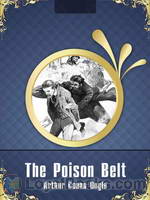 The Poison Belt
The Poison Belt
Three years after the events that took place in The Lost World, Professor Challenger urgently summons his fellow explorers (Professor Summerlee, Lord John Roxton, and reporter E.D. Malone) to a meeting. Oddly, he requires each to bring an oxygen cylinder with him. What he soon informs them is that from astronomical data and just-received telegraphs of strange accidents on the other side of the world, he has deduced that the Earth is starting to move through a region of space containing something poisonous to humankind... | |
By: L. Frank Baum (1856-1919) | |
|---|---|
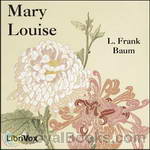 Mary Louise
Mary Louise
The Bluebird Books is a series of novels popular with teenage girls in the 1910s and 1920s. The series was begun by L. Frank Baum using his Edith Van Dyne pseudonym, then continued by at least three others, all using the same pseudonym. Baum wrote the first four books in the series, possibly with help from his son, Harry Neal Baum, on the third. The books are concerned with adolescent girl detectives— a concept Baum had experimented with earlier, in The Daring Twins (1911) and Phoebe Daring (1912)... | |
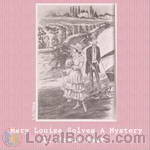 Mary Louise Solves a Mystery
Mary Louise Solves a Mystery
The Bluebird Books is a series of novels popular with teenage girls in the 1910s and 1920s. The series was begun by L. Frank Baum using his Edith Van Dyne pseudonym, then continued by at least three others, all using the same pseudonym. Baum wrote the first four books in the series, possibly with help from his son, Harry Neal Baum, on the third. The books are concerned with adolescent girl detectives— a concept Baum had experimented with earlier, in The Daring Twins (1911) and Phoebe Daring (1912)... | |
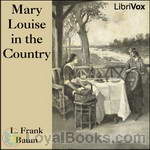 Mary Louise in the Country
Mary Louise in the Country
The Bluebird Books is a series of novels popular with teenage girls in the 1910s and 1920s. The series was begun by L. Frank Baum using his Edith Van Dyne pseudonym, then continued by at least three others, all using the same pseudonym. Baum wrote the first four books in the series, possibly with help from his son, Harry Neal Baum, on the third. The books are concerned with adolescent girl detectives— a concept Baum had experimented with earlier, in The Daring Twins (1911) and Phoebe Daring (1912)... | |
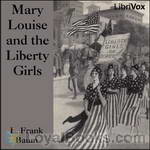 Mary Louise and the Liberty Girls
Mary Louise and the Liberty Girls
The Bluebird Books is a series of novels popular with teenage girls in the 1910s and 1920s. The series was begun by L. Frank Baum using his Edith Van Dyne pseudonym, then continued by at least three others, all using the same pseudonym. Baum wrote the first four books in the series, possibly with help from his son, Harry Neal Baum, on the third. The books are concerned with adolescent girl detectives— a concept Baum had experimented with earlier, in The Daring Twins (1911) and Phoebe Daring (1912)... | |
By: Alexandre Dumas (1802-1870) | |
|---|---|
 The Three Musketeers
The Three Musketeers
The Three Musketeers follows the adventures of the young Gascon nobleman, D’Artagnan and his three trusted friends who served as musketeers in the king’s regiment – Athos, Porthos & Aramis. Written by Alexandre Dumas, the book was a bestseller during the time of its publication and it remains so even today. It follows the timeless theme of friendship and bravery. The main protagonist of the story is D’Artagnan who travels to Paris to realize his dreams of becoming one of the musketeers for the king... | |
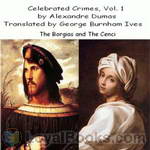 Celebrated Crimes
Celebrated Crimes
Dumas's 'Celebrated Crimes' was not written for children. The novelist has spared no language -- has minced no words -- to describe the violent scenes of a violent time.In some instances facts appear distorted out of their true perspective, and in others the author makes unwarranted charges. The careful, mature reader, for whom the books are intended, will recognize, and allow for, this fact.The first volume comprises the annals of the Borgias and the Cenci. The name of the noted and notorious Florentine family has become a synonym for intrigue and violence, and yet the Borgias have not been without stanch defenders in history... | |
By: Oscar Wilde (1854-1900) | |
|---|---|
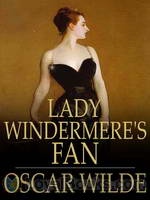 Lady Windermere's Fan
Lady Windermere's Fan
Lady Windermere’s Fan: A Play About a Good Woman is a four act comedy by Oscar Wilde, published in 1893. As in some of his other comedies, Wilde satirizes the morals of Victorian society, and attitudes between the sexes. The action centres around a fan given to Lady Windermere as a present by her husband, and the ball held that evening to celebrate her 21st birthday. | |
By: G. K. Chesterton (1874-1936) | |
|---|---|
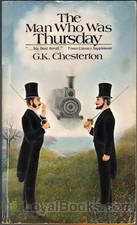 The Man Who was Thursday
The Man Who was Thursday
Two poets in a London park at sunset, debating on the attributes of poetry and whether it's really a metaphor for anarchy. A group that meets in secret, planning to overthrow the world order. Disguises and deceptions, ideals and ideology. A medley of themes and genres makes this a great read for anyone who's a fan of Chesterton and his iconic Father Brown. The Man Who Was Thursday includes Chesterton's favorite theme of Christianity with touches of delightful humor to enliven the twists and turns that abound throughout the book... | |
 The Innocence of Father Brown
The Innocence of Father Brown
A Chief of Police hosts a dinner party for an American millionaire wishing to will his entire fortune to the Church of France. Jewels that have been stolen and recovered so many times that they're known colloquially by thieves as The Flying Stars. A murder committed by an invisible man. These and many others are the mysteries that are presented to the lovable, bumbling, stumpy Man of God, Father Brown. The Innocence of Father Brown, by G.K. Chesterton is a collection of eleven stories which marks the debut of this most unusual detective... | |
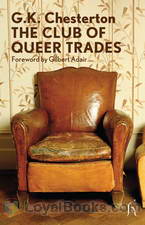 The Club of Queer Trades
The Club of Queer Trades
A collection of six wonderfully quirky detective stories, featuring the ‘mystic’ former judge Basil Grant. Each story reveals a practitioner of an entirely new profession, and member of the Club of Queer Trades. | |
 Manalive
Manalive
The flying blast struck London just where it scales the northern heights, terrace above terrace, as precipitous as Edinburgh. It was round about this place that some poet, probably drunk, looked up astonished at all those streets gone skywards, and (thinking vaguely of glaciers and roped mountaineers) gave it the name of Swiss Cottage, which it has never been able to shake off. At some stage of those heights a terrace of tall gray houses, mostly empty and almost as desolate as the Grampians, curved... | |
 The Trees of Pride
The Trees of Pride
Three trees, known as the Peacock trees, are blamed by the peasants for the fever that has killed many. Squire Vane scoffs at this legend as superstition. To prove them wrong, once and for all, he takes a bet to spend the night in the trees. In the morning he has vanished. Is he dead, and if so who has killed him? The poet? The lawyer? The woodsman? The trees? | |
By: Louisa May Alcott (1832-1888) | |
|---|---|
 The Mysterious Key and What It Opened
The Mysterious Key and What It Opened
In this delightful short story, we discover the secrets of the Trevlyn family. 'The Mysterious Key and What it Opened' is a mystery entwined with romance (Introduction by ashleighjane) | |
By: Elizabeth Gaskell | |
|---|---|
 The Grey Woman
The Grey Woman
A “Bluebeard” story in which a young woman marries a man whom she discovers has killed his previous wives and is trying to kill her as well. | |
By: Gaston Leroux (1868-1927) | |
|---|---|
 The Secret of the Night
The Secret of the Night
Gaston Leroux, perhaps best known as the author of The Phantom of the Opera in its novel form, was also the author of a popular series of mystery novels featuring a young journalist cum detective named Joseph Rouletabille. It is most likely that Leroux styled his hero after himself. Rouletabille was in the tradition of other great detectives who solved their cases by pure deductive reasoning. Much as Sherlock Holmes, who eliminated the impossible and concluded that whatever remained, however improbable must be the truth, Rouletabille included the known facts about the case and eliminated everything that was not a known fact, no matter how much it appeared to relate to the case... | |
By: Joseph Conrad (1857-1924) | |
|---|---|
 The Secret Sharer
The Secret Sharer
A young untested ship captain finds a man named Leggatt clinging to the side of his ship. The Captain makes the unusual decision to hide Leggatt in his quarters. What is he thinking? Conrad will tell us. - The Secret Sharer was first published in the August and September 1910 issues of Harper’s Magazine | |
By: Henry James (1843-1916) | |
|---|---|
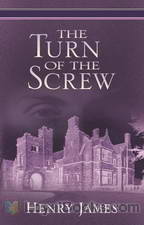 The Turn of the Screw
The Turn of the Screw
Christmas Eve. Guests round a fireside begin telling each other ghost stories. One of them relates a true incident involving the governess of his little nephew and niece. Strange events begin to take place, involving the housekeeper, a stranger who prowls round the grounds, a mysterious woman dressed in black and an unknown misdemeanor committed by the little nephew. The Turn of the Screw by Henry James was published in 1893 and it remains one of the best-known and admired works of this great American writer... | |
By: Fyodor Dostoyevsky (1821-1881) | |
|---|---|
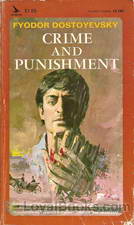 Crime and Punishment
Crime and Punishment
A mysterious crime is being plotted in a tiny garret above a dilapidated apartment building in St Petersburg in Russia. The plotter, Rodion Raskolinikov, is a poor student who has delusions of ridding the world of “worthless vermin” and counter balancing these crimes with good deeds. He commits a murder to test his own theories and prove that crime comes naturally to the human species. Crime and Punishment is a path-breaking novel of ideas that changed the course of novel writing in the 20th century... | |
By: Edgar Wallace (1875-1932) | |
|---|---|
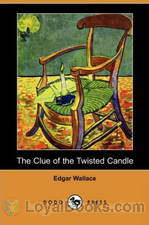 The Clue of the Twisted Candle
The Clue of the Twisted Candle
This story describes a house in Cadogan Square, London, in which extensive alterations have been done by the Greek owner. One of the rooms is built like a safe. The walls floor and roof are made of almost indestructible reinforced concrete. The only door to the room can only be opened or closed by the owner. The single window is unreachable and there is a steel safe built into the outer wall which is in plain sight of the local policeman who patrols the street every night. Yet it is in this barred and shuttered room that the Greek is found brutally murdered... | |
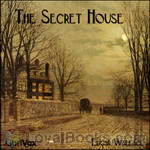 The Secret House
The Secret House
A stranger and foreigner arrives at the offices of a small publication in London only to be faced by the “editor” whose face is completely swathed in a veil. Nothing is as it seems, and it quickly becomes evident that both are bent on more than lively gossip about the elite. Blackmail and opportunism is the order of the day. When two men are found shot to death outside the door of Mr. Farrington the millionaire who just happens to live a few doors from T. B. Smith, the head of the secret police, the connections to blackmail are not long in coming. Were these men shot by the blackmailer? Who is actually what he seems to be? | |
 The Man Who Knew
The Man Who Knew
| |
 Bones Being Further Adventures in Mr. Commissioner Sanders' Country
Bones Being Further Adventures in Mr. Commissioner Sanders' Country
| |
 Jack O' Judgment
Jack O' Judgment
| |
By: Joseph Smith Fletcher (1863-1935) | |
|---|---|
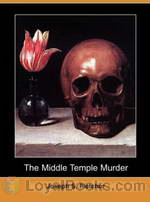 The Middle Temple Murder
The Middle Temple Murder
Midnight. A lonely courtyard. The dead body of a stranger—a prosperous looking, well dressed, elderly man is found in Middle Temple Lane, London. This is one of England's ancient Inns of Court where barristers were traditionally apprenticed and carried on their work. Middle Temple is just a few minutes walk away from busy Fleet Street and the Thames Embankment. In the dead man's pocket is a piece of paper with the name and address of a young barrister. One of the first people to reach the crime scene is the investigative reporter, Frank Spargo, who writes for a leading London newspaper, The Watchman... | |
 The Chestermarke Instinct
The Chestermarke Instinct
Bank manager John Hornbury is missing, as are securities and jewels from the bank’s vault. Gabriel Chestermarke and his nephew Joseph have unaccountably refused to call in the police to investigate the theft from their bank. When Betty Fosdyke shows up to visit her Uncle John, she finds it past belief that he would simply disappear – let alone that he would commit larceny. Unable to simply sit by and wait while a detective from Scotland Yard investigates, Betty elicits the help of the chief clerk at Chestermarke’s bank and launches into the middle of the mystery. | |
By: H. Beam Piper | |
|---|---|
 Murder in the Gunroom
Murder in the Gunroom
The Lane Fleming collection of early pistols and revolvers was one of the best in the country. When Fleming was found dead on the floor of his locked gunroom, a Confederate-made Colt-type percussion .36 revolver in his hand, the coroner’s verdict was “death by accident.” But Gladys Fleming had her doubts. Enough at any rate to engage Colonel Jefferson Davis Rand—better known just as Jeff—private detective and a pistol-collector himself, to catalogue, appraise, and negotiate the sale of her late husband’s collection. | |
By: Wilkie Collins (1824-1889) | |
|---|---|
 The Moonstone
The Moonstone
A young woman who inherits a beautiful diamond known as The Moonstone on her eighteenth birthday becomes the center of this mystery story. The diamond is a gift from an uncle who once served as an army officer in British India. She proudly wears the jewel on her dress at her birthday party that night. The precious stone has a dark and sinister history, which will have a terrible impact on her life and the lives of those around her. You're about to read what's been termed the very first real detective story in the English language... | |
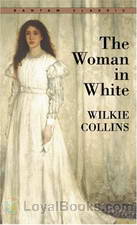 The Woman in White
The Woman in White
Wilkie Collins’s The Woman in White tells the story of two half-sisters, Laura Fairlie and Marian Halcombe who were embroiled in the sinister plot of Sir Percival Glyde and Count Fosco to take over their family’s wealth. It’s considered to be one of the first “sensation novels” to be published. Like most novels that fall into this category, the protagonists here are pushed to their limits by the villains before they finally got the justice they deserved. The story begins with Walter Hartright helping a woman dressed in white who turned out to have escaped from a mental asylum... | |
 The Haunted Hotel, A Mystery of Modern Venice
The Haunted Hotel, A Mystery of Modern Venice
A kind, good-hearted genteel young woman jilted, a suspicious death or two that only a few think could be murder, strange apparitions appearing in an hotel all combine to create a horrifying conundrum. Who was the culprit and will finding out finally put an end to the mystery? | |
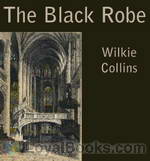 The Black Robe
The Black Robe
The church has lost out on a valuable piece of land through wars and transfers. Father Benwell is determined to reclaim that property by the conversion of the owner, Lewis Romayne. Enter beautiful Stella, who captures the heart of Romayne. Should Stella capture the love and devotion of Romayne, Father Benwell's scheme would fail, and that is something that he can not allow. Complicating things is the fact that both Romayne and Stella are hiding their own terrible secrets.The Black Robe is an 1881 epistolary novel by famed English writer, Wilkie Collins. The book centers around the misadventures of Lewis Romayne, and is also noted for a perceived anti-Catholic bias | |
 No Name
No Name
The story begins in 1846, at Combe-Raven in West Somersetshire, the country residence of the happy Vanstone family. When Andrew Vanstone is killed suddenly in an accident and his wife follows shortly thereafter, it is revealed that they were not married at the time of their daughters' births, making their daughters "Nobody's Children" in the eyes of English law and robbing them of their inheritance. Andrew Vanstone's elder brother Michael gleefully takes possession of his brother's fortune, leaving his nieces to make their own way in the world... | |
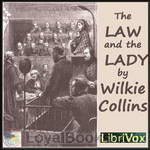 The Law and the Lady
The Law and the Lady
Valeria Brinton marries Eustace Woodville despite objections from Woodville's family leading to disquiet for Valeria's own family and friends.Just a few days after the wedding, various incidents lead Valeria to suspect her husband is hiding a dark secret in his past and she discovers that he has been using a false name. He refuses to discuss it leading them to curtail their honeymoon and return to London where Valeria learns that he was on trial for his first wife's murder by arsenic. He was tried in a Scottish court and the verdict was 'Not Proven' rather than 'not guilty' implying his guilt but without enough proof for a jury to convict him... | |
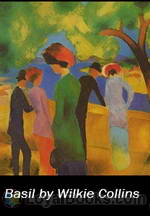 Basil
Basil
Basil, son of a father who values the family pedigree and who would not let him marry below his station, falls in love at first sight with a girl he sees on a bus. He stalks her and discovers she is Margaret Sherwin, only daughter of a linen draper. He stalks her and persuades her father to let him marry her secretly. He agrees on the condition, that, as his daughter is only seventeen, they live apart for the first year. At first the secret works, but then the mysterious Mannion, whose emotions cannot be read in his face, returns from abroad. On the last night of the year Basil follows Margaret and Mannion and discovers them in flagrante delicto. (Wikipedia) | |
 Queen of Hearts
Queen of Hearts
The elderly Brothers Owen, Morgan and Griffith live a quiet, retired life in the countryside, which is turned upside-down by Griffith's ward, the young Jessie Yelverton. Originally, her visit to them was to last only six weeks, but for a very certain reason, the gentlemen must find a way to prolong her visit and get Jessie to stay for ten more days. To make her stay, they promise to tell her an entertaining and exciting story each night... | |
 Miss or Mrs.?
Miss or Mrs.?
Natalie Graybrooke is in love with her cousin Launcelot Linzie, but engaged to Mr. Turlington, an older man who covets her fortune and whom she detests. Turlington is the executor of Natalie's father's estate. When Natalie secretly marries her cousin, Turlington arranges to have Natalie's father murdered, to gain control of his fortune. | |
By: Jean Webster | |
|---|---|
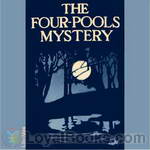 The Four-Pools Mystery
The Four-Pools Mystery
In The Four Pools Mystery the tyrannical plantation owner is deemed responsible for his own murder because of his mistreatment of the former slaves who continued in his employment after the war. Jean Webster (pseudonym for Alice Jane Chandler Webster) was born July 24, 1876 and died June 11, 1916. She was an American writer and author of many books including Daddy-Long-Legs and Dear Enemy. (Wiki) | |
By: Maurice Leblanc (1864-1941) | |
|---|---|
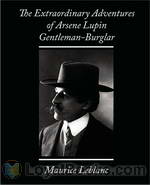 The Extraordinary Adventures of Arsène Lupin, Gentleman-Burglar
The Extraordinary Adventures of Arsène Lupin, Gentleman-Burglar
Two writers, famous in their own countries for creating immortal characters: Sir Arthur Conan Doyle in England and Maurice Leblanc in France. Their literary creations, Sherlock Holmes and Arsene Lupin are at two ends of the criminal spectrum. Holmes is a sleuth while Lupin is a burglar. When Maurice Leblanc introduces Sherlock Holmes in one of his Arsene Lupin stories, Conan Doyle is outraged. He sues Leblanc, who promptly changes the character's name to “Herlock Sholmes” and continues featuring... | |
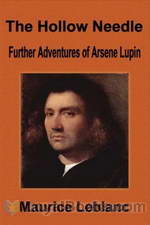 The Hollow Needle: Further Adventures of Arsène Lupin
The Hollow Needle: Further Adventures of Arsène Lupin
Arsène Lupin returns in a wonderful story of disguises, love, and of course treasure. Once again, Lupin crosses paths with the famous Holmlock Shears. But this time Arsène matches wits with Isidore Beautrelet, Sixth-form Schoolboy. Every step that Lupin takes has Beautrelet right on his heels. Has Lupin finally met his match? Will Beautrelet discover the secret of the Hollow Needle? And has the gentleman burglar met another match as well, one who will lead him away from his life of crime forever? | |
 The Eight Strokes of the Clock
The Eight Strokes of the Clock
The Eight Strokes of the Clock is a collection of eight short stories by Maurice Leblanc. The stories have his most famous creation, Arsène Lupin, gentleman-thief, as main character. The eight stories, even though independent, have a leading thread: Lupin, under the name of Serge Rénine, trying to conquer the heart of a young lady, travels with her, solving eight mysteries on the way. | |
 The Confessions of Arsene Lupin
The Confessions of Arsene Lupin
A collection of nine stories - or confessions - of the celebrated gentleman thief Arsene Lupin | |
 The Frontier
The Frontier
| |
By: James Oliver Curwood (1878-1927) | |
|---|---|
 God's Country—And the Woman
God's Country—And the Woman
James Curwood wrote many adventures of the far north. By 1909 he had saved enough money to travel to the Canadian northwest, a trip that provided the inspiration for his wilderness adventure stories. The success of his novels afforded him the opportunity to return to the Yukon and Alaska for several months each year that allowed him to write more than thirty such books. The Canadian North is often referred to as “God’s Country” God’s Country is a tale of adventure, mystery and romance! | |
 The Wolf Hunters
The Wolf Hunters
Follow Roderick and his friends Wabi and Mukoki on their adventures in the pristine North. They fight voracious wolves, hostile natives, and the vicious elements of nature, while on the hunt. Getting more than they bargained for, they discover a mysterious cabin, and stumble upon a secret that has lain hidden for half a century. Full of twists and turns, danger and suspense, The Wolf Hunters, the prequal to The Gold Hunters, is an excellent read. (Introduction by Brian Adey) | |
By: Mary Roberts Rinehart (1876-1958) | |
|---|---|
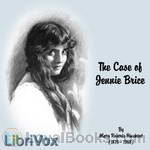 The Case of Jennie Brice
The Case of Jennie Brice
The flood brings in not only the muddy waters but a series of suspicious clues that convinced Mrs. Pitman, a boarding house keeper, that a murder has been committed at her boarding house. Jennifer Ladley aka Jennie Brice is missing and with the help of Mr. Holcombe, a quirky gentleman with a passion for mysteries, they embark on a quest for the truth behind the disappearance of Jennie Brice. | |
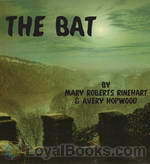 The Bat
The Bat
The novelization of the play of the same name that had an initial run of 867 shows on Broadway and has been performed all over the world and been made into three movies over a span from 1926 to 1959. An intricate mystery, with a wide cast of characters. (Summary by Alan Winterrowd) | |
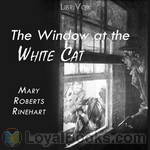 The Window at the White Cat
The Window at the White Cat
When a clumsy, well-meaning lawyer gets involved with a pair of delightful old maids and a beautiful girl, he must acquire some of the skills of his friends the detective and the newspaperman to solve the puzzle of The White Cat. That’s the name of a back-street political club serving beers, political favors and, occasionally, murder. (Introduction by Robert Keiper) | |
 The Man in Lower Ten
The Man in Lower Ten
Someone had to take the bank notes to Pittsburgh and take a statement from John Gilmore confirming that they were indeed forged. It was McKnight's turn to go, but he was bagging off because he wanted to spend the weekend visiting Alison West in Richmond. And so his law partner, Lawrence Blakeley, is left with no choice but to make the trip himself. All goes well at first, but on the train home, Blakeley wakes to find that the notes, along with his clothes, are missing from his sleeping berth. It was an eventful night. In addition to the theft, there's been a murder in the berth across, and when the weapon is found under Blakeley's pillow, he becomes one of the prime suspects. | |
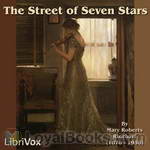 The Street of Seven Stars
The Street of Seven Stars
Published in 1914, this novel tells the story of Harmony Wells, an innocent and beautiful American in Austria to study violin. Harmony has talent and she dreams of a career in music. After her friends run out of money and return to the States, Harmony stays on in hopes of earning enough money to continue her lessons. Along the way, she meets Peter Byrne, an American doctor in Vienna following his dream to study surgery. Peter is already watching over an orphan boy in a local hospital and now he takes it upon himself to protect young Harmony from the unsavory side of life in the big city... | |
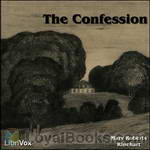 The Confession
The Confession
Mary Roberts Rinehart is claimed to have invented the "Had I but known" mystery genre. When Agnes Blakiston rented the old parsonage at Miss Emily's request she soon came to regret it. Was the house haunted? Did Miss Emily have a secret so terrible she would rather die than reveal it? To find the answers you will need to listen. | |
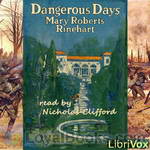 Dangerous Days
Dangerous Days
Dangerous Days opens in a still neutral America, though within a year the country will have joined the European alliance against the Central Powers in the first world war. Clayton Spencer, a successful industrialist and owner of a munitions plant, finds himself facing several problems: not only anarchism and German sabotage, but also the prospect of a deteriorating marriage, and of a son who all too often shares his mother's frivolous and essentially self-concerned point of view. How far will America's entry into the war change such views? What will it mean for Spencer, for his family, and for his business? | |
 Where There's a Will
Where There's a Will
| |
 The After House
The After House
| |
 Sight Unseen
Sight Unseen
| |
 Tish
Tish
The story of three "middle aged ladies". Follow along as they have all sorts of adventures. | |
 More Tish
More Tish
Mary Roberts Rinehart wrote 6 books about the elderly Letitia (Tish) Carberry and the escapades she gets her elderly lady cronies into. The series led to a 1942 movie with Marjorie Main. This particular book, the third in the series, was written after Mary's stint as a war correspondent in Belgium during the first World War. | |
By: Anna Katharine Green (1846-1935) | |
|---|---|
 The Leavenworth Case
The Leavenworth Case
Horatio Leavenworth, an immensely wealthy bachelor, is a retired merchant who enjoys great social position and respect. His two orphan nieces, Mary and Eleanor live with him in a luxurious mansion in New York's upscale Fifth Avenue. One morning, he is found mysteriously dead in his study, shot neatly through the back of his head. His will, written some time earlier, is discovered, in which he has left his entire fortune to one of the nieces, while cutting out the other completely. The building, which had remained locked throughout the night, houses a number of servants besides the two young ladies... | |
 Initials Only
Initials Only
Anna Katharine Green (November 11, 1846 – April 11, 1935) was an American poet and novelist. She was one of the first writers of detective fiction in America and distinguished herself by writing well plotted, legally accurate stories (no doubt assisted by her lawyer father). (Wikipedia) | |
 Missing: Page Thirteen
Missing: Page Thirteen
Violet Strange, a clever petite detective, is called upon to solve the mystery of a page gone missing from an important document. The futures of several people, including an eccentric misanthrope, a chemical scientist, a bride and groom, depend on the quick resolution of this problem. In solving one mystery, she uncovers another which dates back many years. | |
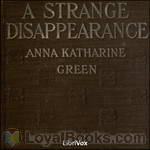 A Strange Disappearance
A Strange Disappearance
Anna Katharine Green (November 11, 1846 – April 11, 1935) was an American poet and novelist. She was one of the first writers of detective fiction in America and distinguished herself by writing well plotted, legally accurate stories (no doubt assisted by her lawyer father). | |
 The Woman in the Alcove
The Woman in the Alcove
“I was, perhaps, the plainest girl in the room that night. I was also the happiest—up to one o’clock. Then my whole world crumbled, or, at least, suffered an eclipse. Why and how, I am about to relate.” Thus begins this mystery told by Anna Katharine Green, one of the first writers of detective fiction in America and renowned for writing well plotted, legally accurate stories. | |
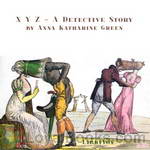 X Y Z - A Detective Story
X Y Z - A Detective Story
"Sometimes in the course of his experience, a detective, while engaged in ferreting out the mystery of one crime, runs inadvertently upon the clue to another. But rarely has this been done in a manner more unexpected or with attendant circumstances of greater interest than in the instance I am now about to relate.For some time the penetration of certain Washington officials had been baffled by the clever devices of a gang of counterfeiters who had inundated the western portion of Massachusetts with spurious Treasury notes... | |
 The Millionaire Baby
The Millionaire Baby
A reward of five thousand dollars is offered, by Phil Ocumpaugh, to whoever will give such information as will lead to the recovery, alive or dead, of his six-year-old daughter, Gwendolen, missing since the afternoon of August the 16th, from her home in New York. (Quote from the book) | |
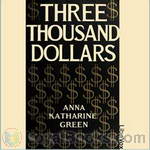 Three Thousand Dollars
Three Thousand Dollars
This short story by Anna Katharine Green revolves around a plot to steal some goods secured safely within an impenetrable vault within the confines of Mr. Stoughton's business concern. Nobody seems to have any clue as to how the vault can be accessed, and yet access is gained once a day by person or persons unknown, by a means not known to anyone, apparently Mr. Stoughton himself included! Every clerk in the office is suspect, as the devious plot to plunder the vault's contents unfolds. (Introduction by Roger Melin) | |
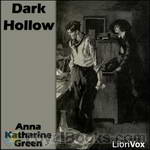 Dark Hollow
Dark Hollow
The small town of Shelby is shaken by a brutal murder. A man by the name of Etheridge was found beaten to death. A local inn-keeper, is convicted and executed for the crime. Many years later, "a woman in purple" shows up at the house of Ostrander, the respected judge who had sentenced the inn-keeper to be executed. This mysterious woman turns out to be the wife of the convicted man, but she does not believe he was guilty. She visits the Judge, to challenge him on his verdict. He listens to her plea, but reaffirms his belief in her husbands guilt... | |
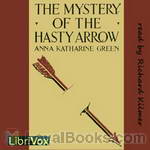 The Mystery of the Hasty Arrow
The Mystery of the Hasty Arrow
It is the noon hour at a museum in New York City. The date: May 23, 1913. The weekday, attendance is light; the attendees are scattered between two floors. Suddenly a cry rings out from the second floor. Scrambling to Section II, the museum director discovers a teenage girl dead with an arrow through her heart. An older woman hovers over her whispering incoherent phrases in the girl's ear and offering incomprehensible answers to the director's questions. She is the only witness to the crime, or accident, as the case may be... | |
 The Amethyst Box
The Amethyst Box
On the evening before his marriage, Sinclair loses a precious curiosity from his collection: an amethyst box, containing a tiny flask of deadly poison. He suspects that this poison is in the possession of either his betrothed or her cousin, the girl his best friend Worthington loves. Turning to Worthington for help, they try to recover the box before the poison can be administered... | |
 The Bronze Hand
The Bronze Hand
A political society secretly operates in Baltimore. When he tries to help his beautiful neighbor Miss Calhoun recover a stolen ring which might cause great unknown danger, Mr. Abbott is drawn into the midst of the conspiracy. (Introduction by Carolin) | |
 Circular Study
Circular Study
In this well-plotted, character-driven mystery, Detective Gryce receives a cryptic message calling him to the scene of a “strange” crime. He soon finds that the adjective is correct, for in a quiet brownstone house in a respectable New York City neighborhood, he finds the body of a man brutally stabbed to death, yet lovingly laid out on the floor of his study. The only apparent witnesses are a deaf and dumb butler driven mad by the event, and a caged bird that sings out a vital but puzzling clue... | |
 The Old Stone House and Other Stories
The Old Stone House and Other Stories
| |
 Agatha Webb
Agatha Webb
A universally beloved woman has been murdered. But who would have the heart to kill Agatha Webb? Would her husband do it for money matters? Or would it be the cook, who died at about the same time? Or would it be the rich and well-connected Mr. Fredrick, who ran away into the woods? This work is also for feminist fiction lovers. As the story starts right after the murder, we see how Miss Page, a servant at a rich house who is the sweetheart of the same Mr. Fredrick, wants to join the investigation- and is constantly prevented from doing so by conservative men. | |
 Forsaken Inn
Forsaken Inn
Told from the perspective of a Mrs. Truax, the owner of an inn during the time of the American and French Revolutions, "The Forsaken Inn" is a locked-room mystery that keeps readers guessing about what has happened. A young couple stays at the inn for the night, and goes on their way in the morning ... and several years later, the bride's body is found in a secret room of the inn. Yet, many people saw that bride leave with her husband. How can this be? Green tells her tale through Mrs. Truax' diary, and through letters and discussions with other characters who were friends of the young couple. An entertaining and highly recommended read. | |
 Mayor's Wife
Mayor's Wife
Miss Saunders is out for an adventure. One, which is full of secrets, hints, and half-lies. One, which will require all of her wits. She is to be the companion to the Mayor's wife. The Lady is unhappy, and the reason for her grave unhappiness is more serious than you think. | |
 A Difficult Problem 1900
A Difficult Problem 1900
| |
 The House in the Mist
The House in the Mist
| |
 Filigree Ball
Filigree Ball
[The Moore House] was standing when Washington was a village. It antedates the Capitol and the White House. Built by a man of wealth, it bears to this day the impress of the large ideas and quiet elegance of colonial times; but the shadow which speedily fell across it made it a marked place even in those early days. While it has always escaped the hackneyed epithet of "haunted," families that have moved in have as quickly moved out, giving as their excuse that no happiness was to be found there and that sleep was impossible under its roof... | |
 The Gray Madam 1899
The Gray Madam 1899
| |
 Chief Legatee
Chief Legatee
"I was married to-day in Grace Church. At the altar my bride--you probably know her name, Miss Georgian Hazen--wore a natural look, and was in all respects, so far as any one could see, a happy woman, satisfied with her choice and pleased with the éclat and elegancies of the occasion. Half-way down the aisle this all changed. I remember the instant perfectly. Her hand was on my arm and I felt it suddenly stiffen. I was not alarmed, but I gave her a quick look and saw that something had happened... | |
 Hand and Ring
Hand and Ring
Widow Clemmens is struck down in her parlor while the town's legal professionals chat outside the courthouse down the street. An investigation is made and two equally plausible suspects are quickly unearthed. But is either guilty? And what role does the mysterious Miss Imogene Dare play in this drama? A classic Green mystery notable particularly for the extended courtroom scenes in the second half of the book. | |
 Hermit of ---- Street
Hermit of ---- Street
Delight Hunter spends her days looking out of her window at her handsome but very mysterious and reclusive next door neighbor. She walks straight into a mystery when one day a fire starts in one of the upper rooms of his house and she dashes over to warn him, only to have him lock her in with instructions to let no one else in. Why is he so insistent that no one come in? What secrets are hidden within the walls of this house? | |
 Staircase at the Heart's Delight
Staircase at the Heart's Delight
Detective Ebenezer Gryce tells the story of the case with which he begun his career in 1840. Several wealthy men were drowned and washed ashore in New York City, and the first clue leads to a dubious money lender... | |
By: Honoré de Balzac (1799-1850) | |
|---|---|
 An Historical Mystery
An Historical Mystery
| |
By: Ambrose Bierce (1842-1913) | |
|---|---|
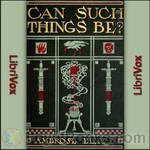 Can Such Things Be?
Can Such Things Be?
24 short stories in fairly typical Bierce fashion - ghostly, spooky, to be read (or listened to) in the dark, perhaps with a light crackling fire burning dimly in the background. Stories of ghosts, apparitions, and strange, inexplicable occurrences are prevalent in these tales, some of which occur on or near Civil War fields of battle, some in country cottages, and some within urban areas. Can Such Things Be? implies and relates that anything is possible, at any time. | |
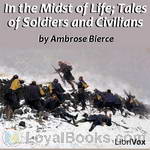 In the Midst of Life; Tales of Soldiers and Civilians
In the Midst of Life; Tales of Soldiers and Civilians
These stories detail the lives of soldiers and civilians during the American Civil War. This is the 1909 edition. The 1909 edition omits six stories from the original 1891 edition; these six stories are added to this recording (from an undated English edition). The 1891 edition is entitled In The Midst Of Life; Tales Of Soldiers And Civilians. The Wikipedia entry for the book uses the title Tales of Soldiers and Civilians. Ambrose Gwinnett Bierce (June 24, 1842 – after December 26, 1913) was an American editorialist, journalist, short story writer, fabulist and satirist... | |
By: Margaret Penrose | |
|---|---|
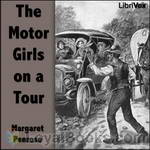 The Motor Girls on a Tour
The Motor Girls on a Tour
This is the second book in the series of the Motor Girls. Join Cora and her friends in this mystery and adventure of The Motor Girls. Also the search for a missing table and promise book belonging to a cripple girl called Wren. Why is Clip so mysterious? What is she up to? Is Sid Wilcox up to his old tricks with his chum Rob Roland? | |
 The Motor Girls on Crystal Bay or, The Secret of the Red Oar
The Motor Girls on Crystal Bay or, The Secret of the Red Oar
| |
 The Campfire Girls of Roselawn Or, a Strange Message from the Air
The Campfire Girls of Roselawn Or, a Strange Message from the Air
| |
By: John Buchan (1875-1940) | |
|---|---|
 The Thirty-nine Steps
The Thirty-nine Steps
The typical action hero with a stiff upper lip whose actions speak louder than his words, a mysterious American who lives in dread of being killed, an anarchist plot to destabilize Greece, a deadly German spy network, a notebook entirely written in code, and all this set in the weeks preceding the outbreak of World War I. The Thirty-nine Steps, by John Buchan is a spy classic entirely worthy of its genre and will delight modern day readers with its complicated plot. It is also notable for being the literary progenitor of the spook novel that typically features the secret operative on the run, determined to unravel a world domination plot... | |
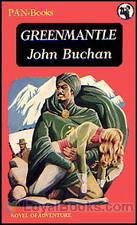 Greenmantle
Greenmantle
Greenmantle is the second of five Richard Hannay novels by John Buchan, first published in 1916 by Hodder & Stoughton, London. It is one of two Hannay novels set during the First World War, the other being Mr Standfast (1919); Hannay’s first and best-known adventure, The Thirty-Nine Steps (1915), is set in the period immediately before the war started. – Hannay is called in to investigate rumours of an uprising in the Muslim world, and undertakes a perilous journey through enemy territory to meet up with his friend Sandy in Constantinople. Once there, he and his friends must thwart the Germans’ plans to use religion to help them win the war, climaxing at the battle of Erzurum. | |
By: A. A. Milne (1882-1956) | |
|---|---|
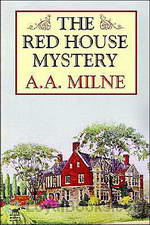 The Red House Mystery
The Red House Mystery
The Red House Mystery is a novel by A. A. Milne about the mysterious death of Robert Ablett inside the house of his brother, Mark Ablett while there was a party taking place. It’s a whodunit novel with a simple story that's skilfully told. Milne is best known for his works about Winnie the Pooh, but before he became famous for telling stories about this teddy bear, he also garnered praise for “The Red House Mystery.” The novel was set during a house party in the mansion home of Mark Ablett known as the “red house... | |
By: Sir Arthur Conan Doyle (1859-1930) | |
|---|---|
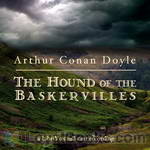 The Hound of the Baskervilles (dramatic reading)
The Hound of the Baskervilles (dramatic reading)
The Hound of the Baskervilles is the third of four crime novels by Sir Arthur Conan Doyle featuring the detective Sherlock Holmes. Originally serialised in The Strand Magazine from August 1901 to April 1902, it is set largely on Dartmoor in Devon in England's West Country and tells the story of an attempted murder inspired by the legend of a fearsome, diabolical hound. | |